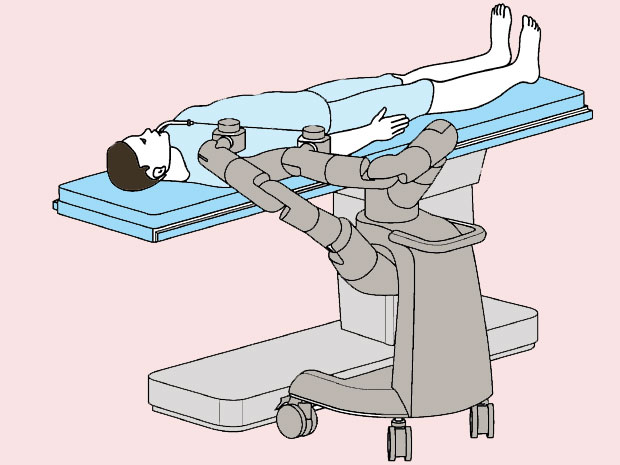The first medical robot introduced from Auris Surgical has got approval from the U.S. Food and Drug Administration (FDA). It is a secretive initiation by the co-founder of the renowned name in the industry Intuitive Surgical, which is also the creators of the extensively-used da Vinci Robot. The Auris Robotic Endoscopy System, shortly named as ARES is teleoperated and was introduced by the FDA around the mid of this year. It is believed that the robot is useful for treating and diagnosing patients.
Auris is a technology company located in Silicon Valley and was previously deemed to be experimenting with a robotic microsurgical system crafted to enhance cataracts, and the company has in fact lined up numerous patent applications along such lines.
The recent works, however, revealed that the firm is focusing on endoluminal or endoluminal surgery that involves surgeons presenting flexible robots through the natural openings of the body, especially the mouth. Such study will help to address the conditions of the lungs, throat and gastrointestinal system. The process of endoluminal surgery does not require large incisions or general anesthesia; it advantages fragile patients who are not able to bear the challenges of normal surgery. The estimates of Society for American Gastrointestinal and Endoscopic Surgeons reveal that efficient endoluminal therapies for reflux and obesity diseases could help more than a million patients in the United States.

“A robot aids in keeping the surgical team out of radiation exposure,” says David Drajeske, president of Applied Dexterity, an initiation that forms the basis for robot surgical research. “Robotics can result in more precision and recurrently offer tools where they require being, while maintaining positive ergonomics for the surgeon.”
The ARES robot was introduced to treat and view lung conditions. It seems similar to Medrobotic’s Flex Robotic System, which is an endoluminal robot built-in with a range of surgical instruments that travels down the throat. One of the major tools of the Auris’s robot is the use of forceps, graspers, scalpels and lasers, potentially allowing a surgeon to perform everything from gastric repairs to biopsies to excising tumors.
The robot is remotely operated by a professional surgeon at a workstation. Surgeons can control the robot with the use of 3-D maps generated from a collection of 2-DCT scans and place the gadget with electromagnetic sensors, automatic video tracking or accelerometers. Auris do possess some fascinating intellectual property like a patent application system that illustrates a 3-D synchronization system for surgical robots that consists an internal ‘geo-fence’ to help surgeons from unintentionally harming patients from the inside.
Ken Goldberg, the head of the Berkeley Laboratory for Automation Science and Engineering says, “The robot is brilliant, and I am waiting for his next performance. I am keen to know if he is considering working on a supervised autonomy. He will surely pull it off.” With millions of VC in the bank and the very first robot of Auris, the robot is almost complete to enter into the market; Moll seems well prepared to impress the world again.
Filed Under: News


Questions related to this article?
👉Ask and discuss on EDAboard.com and Electro-Tech-Online.com forums.
Tell Us What You Think!!
You must be logged in to post a comment.